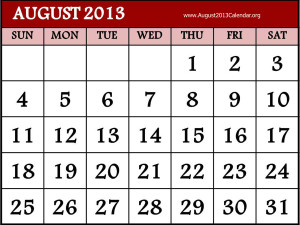August 2nd, 2013
A Time of Transition
Jonathan Schwartz
 August is here, and we are deep in the throes of a new academic year. With this annual cycle, we deal with transitions in the academic medical world – many of which seem somewhat painful at first glance but, on closer inspection, actually can be quite fun. Many of you in medical training undoubtedly have moved into new roles: be it matriculation from student to intern, or adjusting to the care manager and team leader simultaneous roles with the switch from intern to resident. The transition from junior resident to senior resident typically is less dramatic, but generally means more time for self-directed learning and a focus on the next steps in your career. Arguably, the most unnerving transition is that from senior resident to independent practitioner. That said, a great number of NEJM Journal Watch readers have likely opted to continue training and begin fellowship (the category to which I belong!).
August is here, and we are deep in the throes of a new academic year. With this annual cycle, we deal with transitions in the academic medical world – many of which seem somewhat painful at first glance but, on closer inspection, actually can be quite fun. Many of you in medical training undoubtedly have moved into new roles: be it matriculation from student to intern, or adjusting to the care manager and team leader simultaneous roles with the switch from intern to resident. The transition from junior resident to senior resident typically is less dramatic, but generally means more time for self-directed learning and a focus on the next steps in your career. Arguably, the most unnerving transition is that from senior resident to independent practitioner. That said, a great number of NEJM Journal Watch readers have likely opted to continue training and begin fellowship (the category to which I belong!).
A few researchers have looked into whether this abrupt transition each academic year has an effect on patient care. Dubbed the “July effect,” studies have shown some evidence of decreased quality of healthcare in July (with careful attention to how quality is defined). A meta-analysis of such studies was published in the Annals of Internal Medicine in 2011 (see the NEJM Journal Watch summary here), which reported higher patient mortality, as well as lower hospital efficiency during this trainee transition period. However, the evidence is not strong, and further inspection with high-quality studies is needed. I would argue that, in fact, new trainees have an intense focus and are highly motivated to do an excellent job – particularly when starting at a new position. Combining this with attending physicians who take a more hands-on approach to guiding their trainees so early in their careers, I believe a strong argument can be made that patients receive better, if not equal, care in July as in other months. Regardless, attentiveness to detail and a low threshold for seeking help when needed is prudent, particularly during these first few months.
The new academic year has also brought my own transition to fellowship training; it has been an incredibly exciting progression (and sometimes scary!) to now call myself a cardiology fellow. This transition has provided me with new motivation to understand and master new skills, this time not only to increase my knowledge base with specific focus on cardiovascular medicine, but also to prepare for eventual independent practice as a cardiologist. The transition from chief resident to first-year fellow has been quite humbling at times, but I clearly remember the transition from medical student to intern just a few years ago – it’s not significantly different!
As you might have guessed, this new role for me also means the time has come to pass the baton of the Journal Watch Chief Resident Blog to a new pair of authors, to whom you’ll be introduced shortly (stay tuned for a new post soon…). I wish each of you the best of luck in your new positions, whatever and wherever they may be!
Kindest regards,
Jonathan Schwartz, MD


Congratulations Dr. Schwartz
Stanford is lucky to have you!